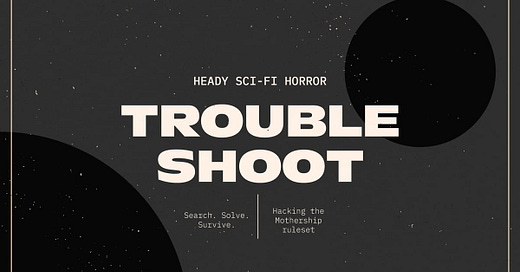I got caught in Mothership's tractor beam almost immediately—a sci-fi horror game with cotton jumpsuits, iron hulls, and chumps working forklifts. However, after years of playing Mothership, I've gravitated towards three parts of the game:
The best part is solving problems. Open-ended puzzles, fun tools, and clever players puts Mothership in warpdrive. The best modules usually pair this potent combination with a heady sci-fi concept.
The worst part is the mechanical crunch. It's not bad or hard, but the least interesting parts of Mothership can be read off a calculator—stats, saves, counting credits, and making calculations. I love the stat tree, but I find the bonus awkward. I like that marines get a bonus to combat, but I don't like how regular combat is a stat you roll against. In short, my favorite parts of Mothership are qualitative, and my least favorite are quantitative.
When in doubt, pour on the gas. A friend described his design approach like this, "I don't worry about pacing. I just roll in the powder kegs." Fill rooms with things that explode then hand over the matches.
These three opinions grew like a red Martian weed. When Mothership's first edition finally landed at my table earlier this year, another alien system was there to greet it…
Want to read more?
Explorers Design migrated off Substack in early 2024. If you want to support my work, you can find me on the all-new website by clicking the button below. It’s all the content you love with a few improvements.
Until then, never stop exploring!





